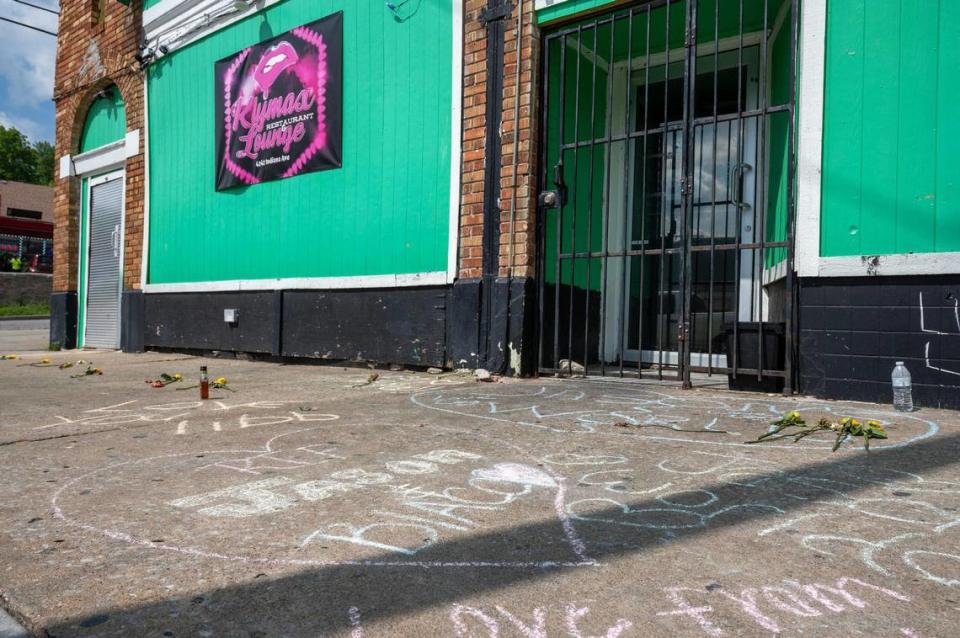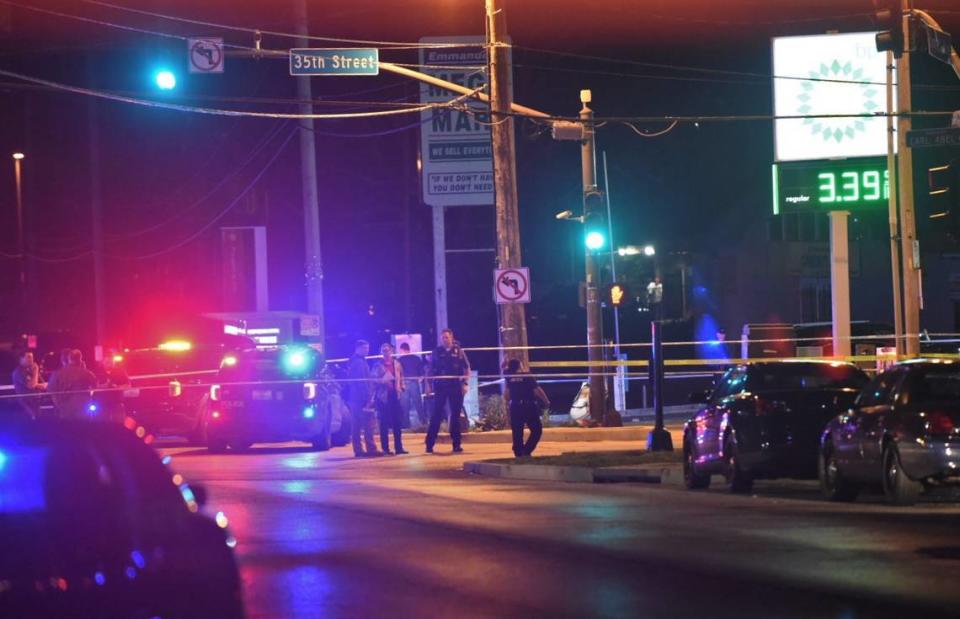Of nearly 100 homicides, Kansas City police have solved just 32 killings this year. Why?
About halfway through the year, Kansas City is close to recording 100 homicides.
And so far, the Kansas City Police Department has cleared just one third of them.
As of Tuesday, police had cleared 32 of the 97 killings reported so far in 2023, according to the police department’s statistics. That is a clearance rate of about 33%.
The Star’s homicide count, which includes fatal police shootings, numbers 99 killings so far this year.
The city, which has long struggled with high rates of gun violence and a strained relationship between police and community members, was pushed rapidly toward a triple-digit homicide count over the weekend when a mass shooting early Sunday at an after-hours club left three people dead and six injured.
Elsewhere in Kansas City that day, two more people were shot and killed, including a 17-year-old boy.
Speaking after the shootings Sunday, Police Chief Stacey Graves said something police leaders have repeated many times before: Some witnesses did not want to come forward and cooperate with police.
“Kansas City has experienced another weekend of gun violence and where we currently are at an alarming number of homicides,” Graves said Tuesday during a meeting of the Kansas City Board of Police Commissioners. “We have a complex problem of gun violence in our neighborhoods and communities. I say we have a culture of violence, or it’s expected and accepted.”
Graves pointed out that police made an arrest within 12 hours of the mass shooting Sunday, which occurred at an auto shop at 57th Street and Prospect Avenue that hosted after-hours parties.
But a previous shooting that left three people dead and two injured last month at the Klymax Lounge, 4242 Indiana Ave., remains unsolved.
And the police department’s low clearance rate means most killings are going unsolved.
So far this year, the 99 homicides reported in Kansas City outpace the 95 recorded during the same period in 2020, a year that ended by setting a record of 182.

Homicide clearance rate
Kansas City police officially calculate their homicide clearance rate by including cases from previous years that were solved this year, which is the standard used by the FBI.
That allows the police department to claim a higher clearance rate of 49%.
A homicide is considered cleared when detectives present a case to prosecutors and a suspect is arrested and charged. Kansas City police send cases to prosecutors not only in Jackson County but in Platte, Clay and Cass counties.
Homicide clearance rates vary widely across the country, but historically U.S. cities expect to see around a 50% clearance rate for homicides.
Kansas City has struggled with low homicide clearance rates for years.
In the summer of 2020, when the city was on its way to setting a record for homicides, police recorded a clearance rate of 43%. That was the same as the average end-of-year clearance rate for the previous five years.

Nonfatal shooting clearance rates tend to be even lower, said Marijana Kotlaja, an assistant criminal justice professor at the University of Missouri-Kansas City.
To understand the problem, The Star in 2018 took a closer look at the homicides of 2013, analyzing how they were processed by police, prosecutors and the courts. After five years, enough time had passed for murder cases to either go cold or work their way through the criminal justice system.
Of the 100 homicides reported in 2013, 40 led to charges being filed. In 31 of those cases, a defendant was convicted. Three of those convicted were free in 2018. Most of the rest remained unsolved
Last year, Kansas City recorded 169 homicides, not including fatal police shootings. Of that total, the police department cleared 78 cases, according to police homicide data. That’s a clearance rate of about 46%.
Mayor, city council member hope police will improve
People need to have confidence in their police department and confidence that those who commit crimes will be arrested, said Melissa Robinson, who represents the Third District on the Kansas City Council.
That would encourage witnesses to step forward, she said.
“We also cannot ignore that apprehending suspects and prosecution cannot occur if there is an unwillingness to share what is witnessed and not only confidentially but oftentimes publicly during the prosecution process, Robinson said.
“We find ourselves in a challenging cycle that requires cooperation, witness protection and above all prevention.”
Mayor Quinton Lucas, who has a seat on the police board, on Tuesday acknowledged the department’s low homicide clearance rate.
“The (police) department continues to work harder to enhance the clearance rate. It has many factors as to why we are where we are,” Lucas said. “Some of that relates to building more community trust. I think this police chief is working hard to do that. I think that we will continue to try to see ways that we can enhance that long term.”
Lucas said hours after the mass shooting on Sunday, he noticed homicide detectives canvassing the neighborhood to find witnesses. But witnesses are often reluctant to come forward.
“There’s always work to do. I’m not gonna sugarcoat it. I don’t think there’s anybody in the department or on the board of police commissioners who’s interested in sugarcoating it,” he said. “That being said, we’re going to keep striving to be better. I have faith that this police department will do so.”
Kotlaja, the UMKC professor, said residents cooperating with police and prosecutors is critical to clearing crimes in general, but this is particularly true for violent crimes.
“People note their reluctance to cooperate with the criminal justice system when they lack trust that the system is fair and transparent, do not believe the system will bring shooters to justice, and when they fear retaliation for cooperating,” she said.
“This is why gaining trust between police, prosecutors, and those impacted by violence is so important, and why trust-building is central to many prevention strategies.”
There is a vicious cycle and self-fulfilling prophecy in the problem, she said. Citizens lack faith in the police, so they are reluctant to cooperate.
“This makes it more difficult to hold people accountable for committing violence, which lowers the clearance rate. Which makes citizens even more skeptical and less likely to cooperate. And the process repeats.”

